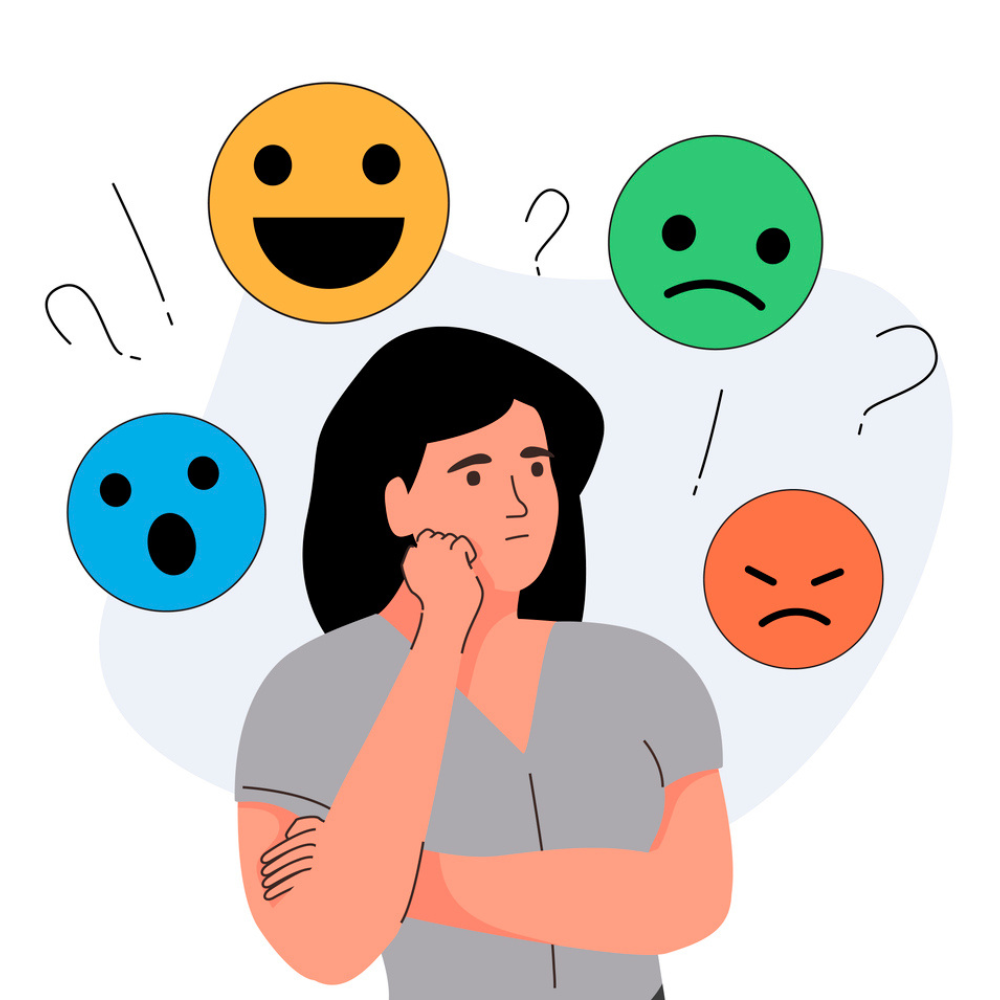Mental Mondays: How To Track Your Feelings With An Emotion Chart

A creative writer with a voracious appetite for fashion, beauty,…
Our emotions serve as powerful indicators of our mental and emotional well-being. However, many people find it challenging to identify and articulate their feelings accurately. This is where an emotion chart becomes an invaluable tool. By tracking your emotions, you can cultivate greater self-awareness, improve emotional regulation, and strengthen your relationships.
An emotion chart is a visual representation of various emotions, typically grouped into categories such as happiness, sadness, anger, fear, and surprise. These charts can range from simple smiley faces designed for children to more complex models like the Wheel of Emotions developed by psychologist Robert Plutchik. The primary goal of an emotion chart is to help individuals accurately identify and articulate their feelings, fostering greater emotional awareness.
Here’s why you should use an emotion chart…
- Recognizing and naming your emotions is the first step toward understanding them. After all, you can’t address an issue you don’t acknowledge.
- Being aware of how you feel can guide your actions, helping you make more thoughtful choices.
- Tracking emotions allows you to identify patterns, recognize triggers, and pinpoint areas that need attention.
- As adults, we often suppress our emotions, fearing they might disrupt our routines or productivity. However, the opposite is true—ignoring emotions only leads to greater emotional strain over time.
- Simply put, when you understand your feelings, you can communicate them more effectively, leading to healthier relationships and improved well-being.
Check out effective steps to tracking your emotions with this tool…

#1. Choose the right emotion chart
Selecting the right emotion chart is crucial, as different formats cater to different needs. Some well-known options include:
- Basic Emotion Charts: Simple lists of primary emotions such as happiness, sadness, anger, and fear.
- Plutchik’s Wheel of Emotions: A more complex chart featuring eight primary emotions and their variations.
- Emoji Charts: Visual representations using emojis, ideal for younger users or visual learners.
Take the time to research and choose a chart that resonates with you and best suits your needs—it’s an effort that will pay off in deeper emotional awareness.
#2. Track consistently
Consistency is key when tracking emotions. Decide how often you want to check in with yourself:
- Daily: Reflect on your feelings at the end of each day.
- Multiple Times a Day: Track emotions in the morning, afternoon, and evening for more detailed insights.
- Weekly: Summarize overall emotional trends to observe patterns over time.
#3. Identify your emotions
Once you’ve chosen your method, take a moment to reflect on your feelings and use your emotion chart to pinpoint the closest match. Ask yourself:
- How am I feeling right now?
- What triggered this emotion?
- Is this a primary emotion (e.g., anger) or a secondary one (e.g., frustration)?
By making emotion tracking a habit, you can develop greater self-awareness, improve emotional regulation, and enhance your well-being.
#4. Log your emotions

Using a journal, app, or spreadsheet to track your emotions might seem like extra work, but it becomes easier with time. Think of it as a small investment in your emotional well-being. When logging your emotions, include:
- The emotion you felt: Be as specific as possible.
- The date and time: Helps track patterns over days, weeks, or months.
- Triggers or circumstances: Identify what led to the emotion.
- Your response: Note your actions, thoughts, or coping strategies.
#5. Identify patterns
Over time, reviewing your records can reveal key insights into your emotional world. Ask yourself:
- Are certain emotions recurring?
- Do specific situations, people, or environments trigger them?
- How do I typically respond, and is it helpful?
Recognizing these patterns can help you develop strategies to manage emotions more effectively and improve your mental well-being.
#6. Take action
Tracking is just the first step—using your insights is where the real growth happens. Consider:
- Practicing mindfulness or meditation to stay present.
- Developing healthy coping mechanisms for difficult emotions.
- Celebrating moments of joy and gratitude to reinforce positivity.
Here are some emotion tracking tools to consider
- Digital tools: Apps make it easy to track emotions on the go.
- Journals: Guided emotion journals provide prompts to help with reflection.
- Professional support: Sharing your logs with a therapist can offer deeper insights and strategies for emotional growth.
By making emotion tracking a habit, you empower yourself with greater self-awareness, resilience, and emotional balance.
See some potential challenges and tips to help you succeed

It’s natural to face obstacles when tracking emotions. You might struggle to identify emotions accurately, forget to log them regularly, or feel overwhelmed by negative feelings. These challenges can be discouraging, but with practice, it becomes easier.
How to overcome these hurdles:
- Start broad, then refine: Begin with general categories (happy, sad, angry, anxious), and as you get more comfortable, pinpoint specific emotions.
- Set reminders: Use phone alerts or calendar prompts to build a habit of tracking.
- Practice self-compassion: Avoid judging yourself for feeling a certain way. Every emotion is valid and offers insight into your well-being.
The key is consistency and patience. Over time, you’ll gain a clearer understanding of your emotions and how to manage them effectively.
In conclusion
Tracking your emotions with an emotion chart is a powerful step toward cultivating emotional intelligence and enhancing your well-being. By consistently monitoring and reflecting on your feelings, you gain valuable insights into your mental health, helping you make positive, informed choices. Remember, emotions aren’t right or wrong—they’re signals guiding you toward deeper self-awareness and growth. Start your journey today and experience the transformative power of emotional awareness.
Featured image: Mykyta Dolmatov/iStock
Medical Disclaimer
All content found on the StyleRave.com website, including text, images, audio, video, and other formats is created for informational purposes only. The content is not intended to be a substitute for professional medical advice, diagnosis, or treatment. If you think you may have a medical emergency, please call your doctor, go to the nearest hospital, or call 911 immediately depending on your condition.
For the latest in fashion, lifestyle, and culture, follow us on Instagram @StyleRave_
—Read also
A creative writer with a voracious appetite for fashion, beauty, lifestyle and culture. As one who's passionate about the advancement of the woman, creating content that inspire smart style and living, and positive lifestyle changes is a calling I take seriously. At Style Rave, we aim to inspire our readers by providing engaging content to not just entertain but to inform and empower you as you ASPIRE to become more stylish, live smarter and be healthier. Follow us on Instagram @StyleRave_ ♥






